Share of Voice: Definition + How to Measure and Grow It in 2025
Learn how to measure and grow your share of voice in 2025 across multiple channels to boost brand visibility and outperform competitors.
April 28, 2025

- What is share of voice (SOV)?
- How to calculate and measure your share of voice
- Share of voice vs market share
- Do you actually need to track your share of voice?
- How to track your share of voice
- What to include in your SOV report
- How to increase your share of voice in 2025
- The top 3 tools to measure your share of voice
- Best practices for tracking share of voice
Share of voice measures how much of the market conversation your brand owns compared to rivals.
In simple terms: are people talking about you or your competitors?
In 2025, consumers don't follow linear paths to purchase. They bounce between search engines, social platforms, review sites, and messaging apps simultaneously.
Brands that can't track their presence across this fragmented landscape get left behind.
This guide gives you practical ways to calculate, track, and boost your share of voice.
What is share of voice (SOV)?
It reflects your brand’s presence relative to competitors in the spaces where your audience is most active—from social media to forums.
It's a strategic metric that shows whether you're leading industry conversations or getting lost in the noise.
Why is it so important?
Because this visibility directly influences customer awareness, perception, and eventually, purchasing decisions.
SOV also varies by context and channel:
In PR and news coverage: How frequently your brand appears in media vs other industry players
In social media: Your portion of relevant conversations, hashtags, and engagement
In SEO: Your share of organic traffic and organic search visibility for industry-relevant keywords
In paid advertising: Your impression share relative to total available impressions in paid channels
For example, here’s what the SOV metric looks like in Talkwalker—a
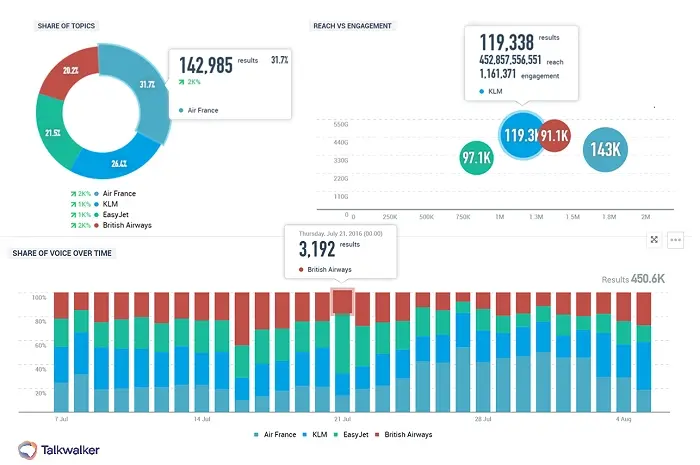
How to calculate and measure your share of voice
The basic share of voice formula is straightforward:
(Brand Mentions ÷ Total Mentions in Category) × 100 = SOV%
You need to count how many times your brand is mentioned, divide by the total mentions for all brands in your category, then multiply by 100 to get a percentage.
For example, if your brand gets 100 mentions out of 1,000 total industry mentions, your SOV is 10%.
However, what counts as a "mention" changes depending on the channel:
Social media SOV: Uses brand mentions, hashtags, and engagement metrics
SEO SOV: Measures visibility share for target keywords and search terms
Media SOV: Tracks news articles, PR mentions, and industry coverage
PPC (pay-per-click) SOV: Calculates impression share in paid advertising platforms
For each set of channels, you’ll be using a specialized tool that calculates your SOV based on its own methodology.
Share of voice vs market share
Let’s clarify another possible confusion: are share of voice and market share the same metric?
Not really—they measure different aspects of your business performance.
However, these metrics are closely connected:
Share of Voice
Market Share
Measures brand visibility and conversation
Measures actual sales and revenue
Leading indicator (predicts future growth)
Lagging indicator (reports past results)
Shows digital marketing effectiveness
Shows business performance
Calculated from mentions and engagement
Calculated from sales data
In other words, share of voice tracks your brand's presence in conversations, while market share measures your portion of actual sales in the target niche.
Do you actually need to track your share of voice?
In short: Yes. Especially if:
You compete in saturated or fast-moving markets where your share of voice shows whether your campaigns and product launches create impact
Your brand spends on content, PR, or social, and you want to track the impact of this investment
You want to grow brand awareness based on data and spot channel gaps where your competitors dominate the conversation
In fact, industry research shows only 13% of PR professionals rely solely on the quantity of coverage.
Another 29% analyze media types and audience demographics, while 23% incorporate share of voice and message pull-through. The most advanced 35% track all these and engagement metrics.
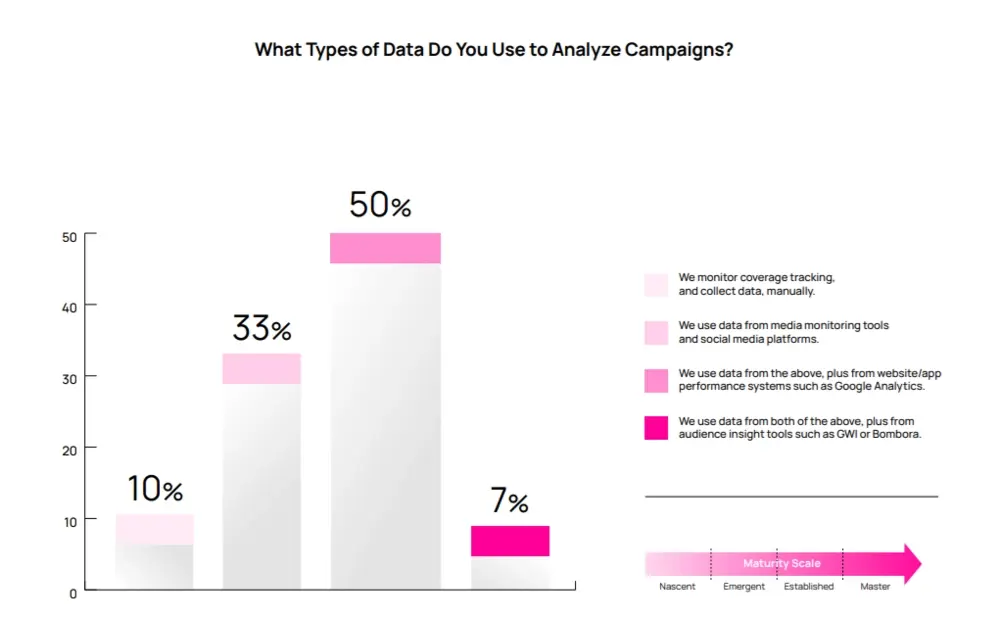
The bottom line? Choosing progressive metrics like SOV helps you join the forward-thinking specialists.
It also helps you achieve tangible gains like:
Understand audience engagement
Share of voice reveals which topics and messages resonate with your target audience.
By analyzing which content drives the most engagement, you can identify patterns in what your audience responds to versus what they ignore.
This goes beyond website traffic—a metric whose efficiency is rapidly declining as platforms like LinkedIn, Instagram, AI tools, and even Google increasingly discourage users from leaving.
Benchmark against competitors
Regular SOV monitoring also shows where you stand against competitors.
You'll see who's gaining ground and where your messaging is breaking through. This competitive intelligence helps identify gaps in your strategy and opportunities to outperform rivals.
For example, Talkwalker lets you see exactly how you perform against your rivals. You can then use this data to inform your marketing strategy:
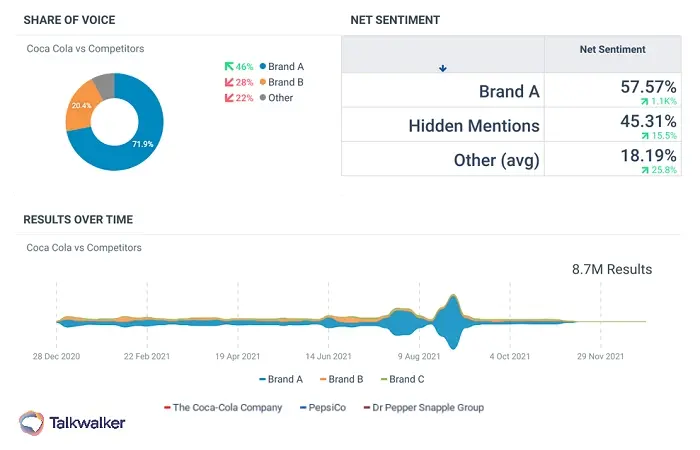
Guide strategic spending
Share of voice has also become a critical input for media budget planning.
Researchers Binet and Field studied 171 campaigns and established that market share typically gains 0.5% for every 10% in excess share of voice (ESOV).
For example, if your brand holds 20% market share, aiming for >20% industry voice creates the conditions for growth.
In simple terms, if you’re more visible than your market share suggests you should be, growth tends to follow.
Understand your visibility
SOV breaks down where your brand appears in the market conversation.
This multi-channel view shows whether you're overrepresented in some channels while invisible in others.
For example, you might discover strong rankings in organic search but poor visibility in industry podcasts where decision-makers get information.
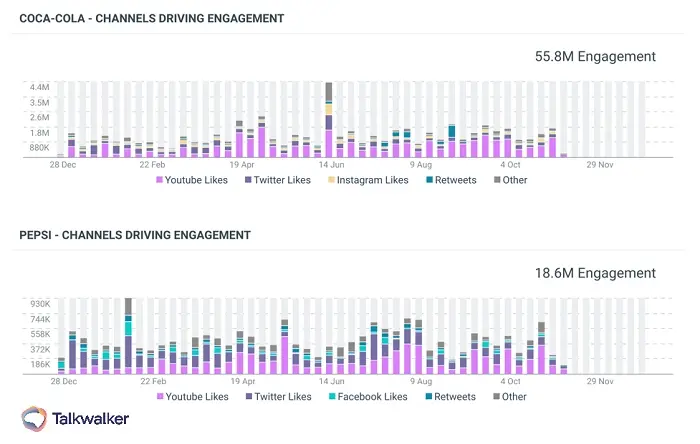
Measure ROI of Awareness
Finally, SOV connects your brand-building activities to actual shifts in visibility.
The metrics transform abstract concepts like "awareness" into measurable marketing metrics that executives understand.
The numbers back this up: Research shows that for every 10% you boost your share of voice above your current market share, you'll typically gain 0.5% in actual sales.
This direct relationship between voice and revenue proves the ROI of brand awareness campaigns.
How to track your share of voice
First things first: You need proper tools to effectively measure your share of voice.
Manual search and even free tools like Google Alerts don’t reveal the full picture when analyzing multiple channels and competitors.
Here’s how you can check and analyze your share of voice depending on your goals.
Tracking media and news coverage share of voice
When analyzing share of voice across news and media, you're measuring how often journalists and publishers mention your brand versus competitors.
You'll need media monitoring tools like Talkwalker to capture mentions in thousands of publications. These tools scan everything from major news outlets to industry blogs and press releases.
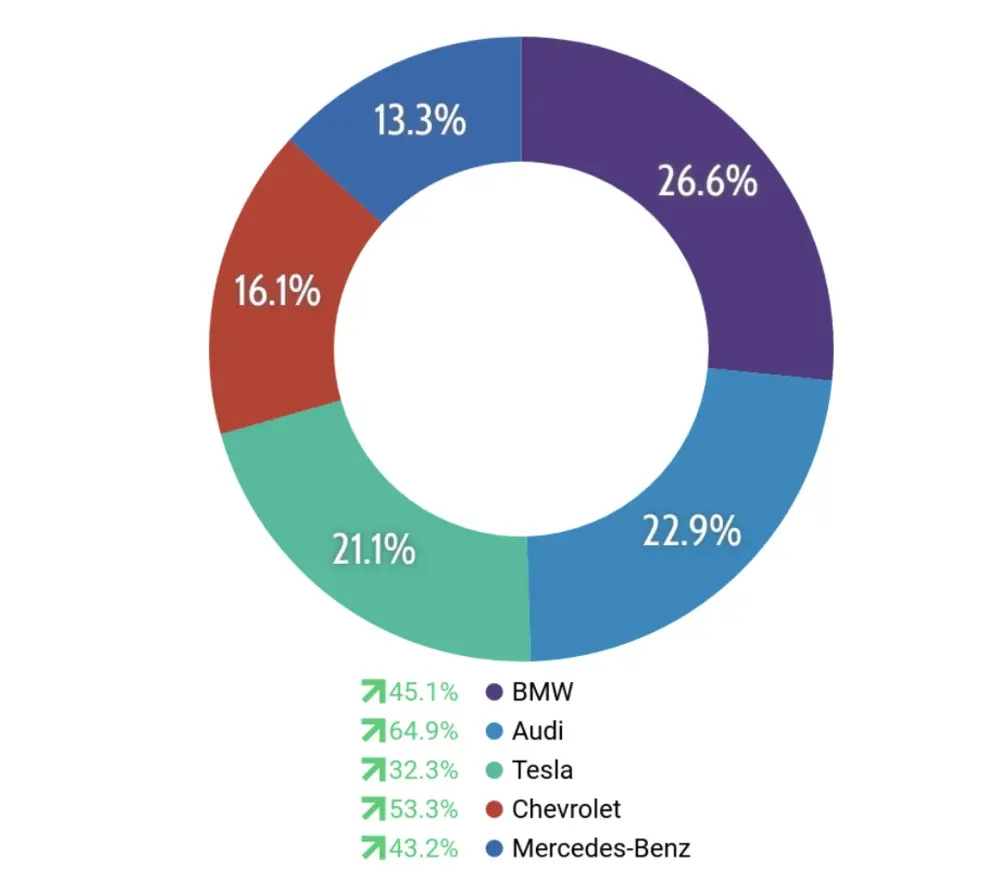
Media SOV gives you a clear picture of PR effectiveness.
It also helps you understand when and how specific events like product launches or social media crises affect your brand reputation.
Analyzing social media share of voice
Social media SOV also requires using comprehensive social listening tools like Talkwalker or Hootsuite.
Such tools track posts, comments, hashtags, mentions and engagement on social media platforms—both in text and visual content.
With social media SOV data, you can identify which social media platforms drive the most conversation about your brand, and spot conversation trends and spikes caused by your campaigns.
For example, this sample Tesla SOV report tracks social media engagement and audience activity by channel:
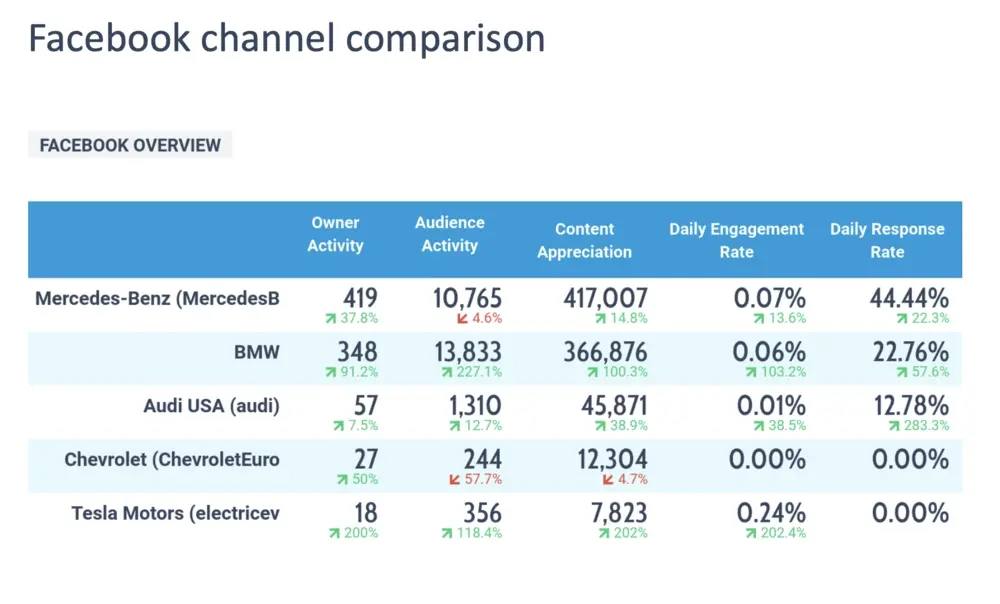
Tracking SEO share of voice
To measure SEO share of voice, you need specialized tools like Semrush, Ahrefs, or Moz. They track your search visibility versus competitors and show your click share for relevant industry keywords.

You can also use Google Trends—a free tool that monitors seasonal search patterns and emerging interests in their category (however, it can’t measure your own share of voice).
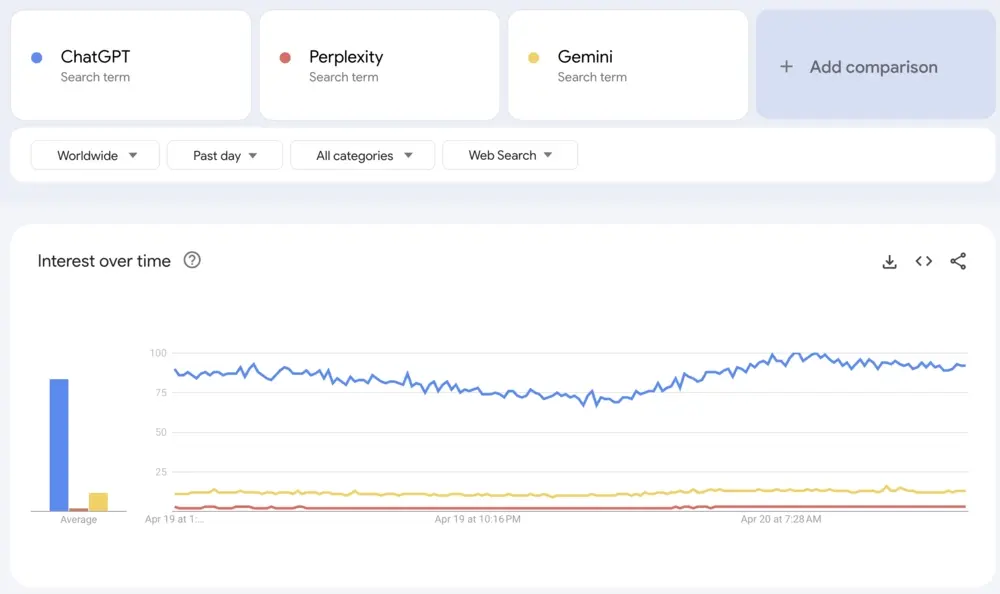
SEO SOV analysis identifies keyword opportunities where competitors outrank you, checks visibility improvements after content or SEO campaigns, and measures your organic search market share by topic or product category.
Analyzing influencer and creator share of voice
Tracking how influencers affect your share of voice requires a more nuanced approach than the other metrics we've discussed.
There's no simple "influencer SOV" filter in analytics tools. Instead, brands typically use social listening platforms like Talkwalker to perform targeted analysis.
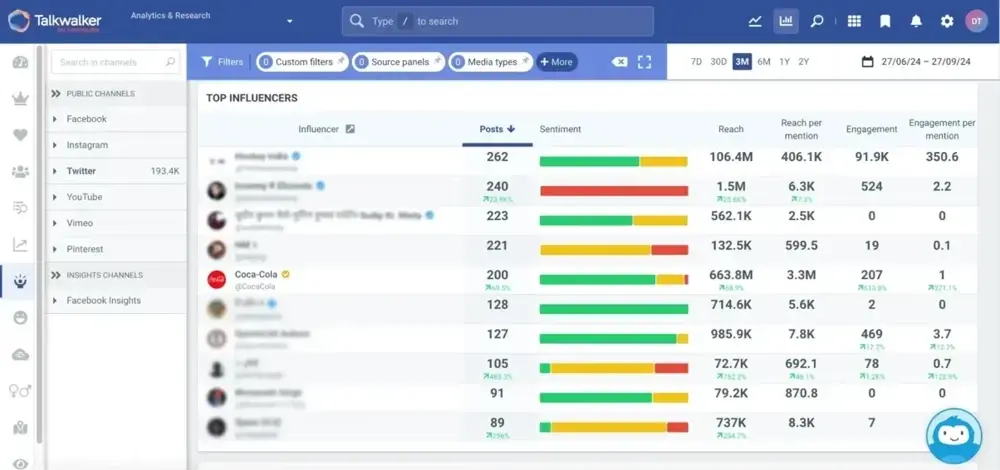
For example, you can identify specific influencer accounts in your industry, follow conversations they generate about your brand and competitors, and analyze how these conversations contribute to your overall share of voice.
Here’s what it looks like in our Tesla report:
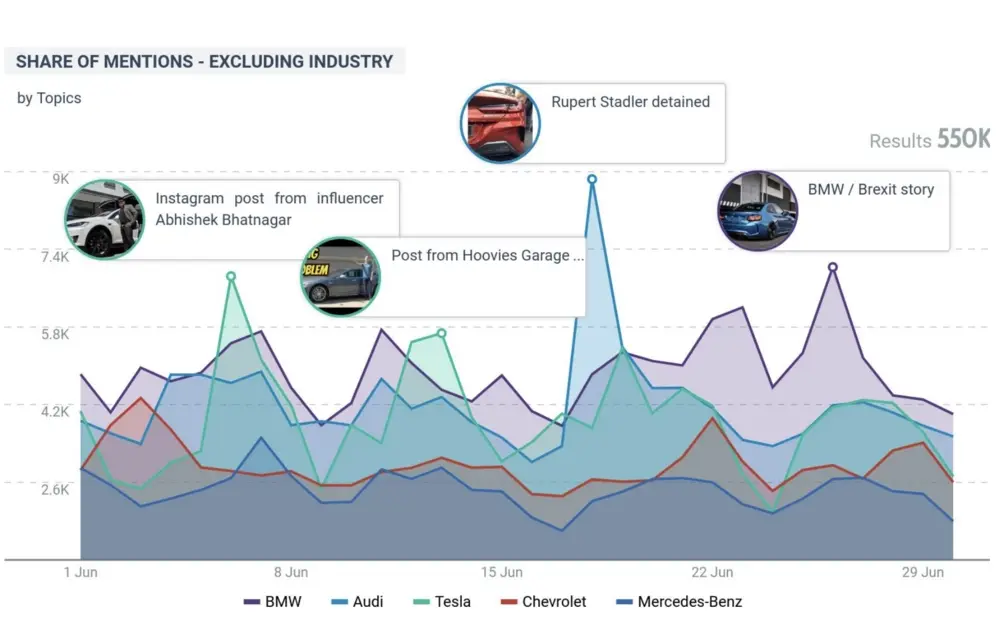
What makes this analysis valuable is seeing the ripple effect: how a single influencer mention can create conversation spikes that extend far beyond their original post.
Tracking PPC share of voice
Finally, paid advertising share of voice (sometimes called PPC share of voice) measures your brand's visibility in paid search results and online advertising compared to rivals.
This metric shows what percentage of the potential ad impressions your brand is capturing for keywords relevant to your business.
The primary measurement used is impression share. For example, if your ads could have shown 1,000 times based on your keyword targeting, but only appeared 700 times, your impression share would be 70%.
Most marketers start tracking this in Google Ads using the Auction Insights report, which directly compares your ad visibility against competitors bidding on the same keywords.
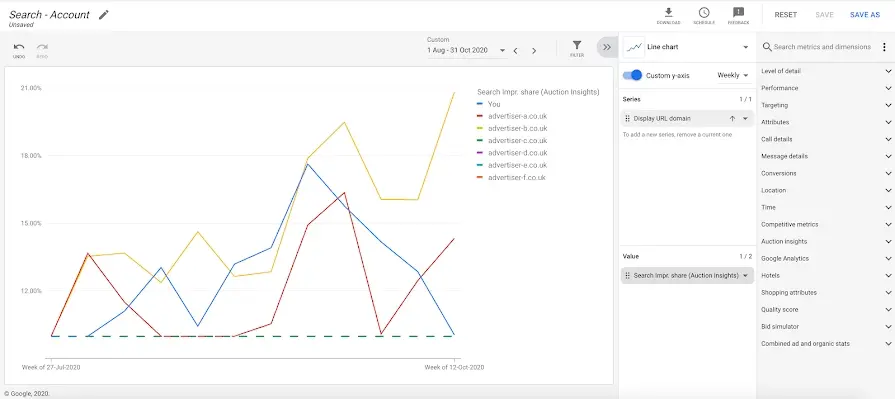
For a complete view across multiple platforms (Google, Bing, social ads), specialized tools like Adalysis or SpyFu compile this data into unified dashboards.
What to include in your SOV report
A share of voice report should contain several key elements to give you a complete picture of your brand's visibility in the marketplace.
Let’s look at some of them.
First, include your overall share of voice comparison with direct competitors, typically visualized as a pie chart showing percentage breakdown among key industry players.
For instance, our Tesla report shows that they hold 21.1% of industry conversation compared to BMW's 26.6%, Audi's 22.9%, and other competitors' share of voice:
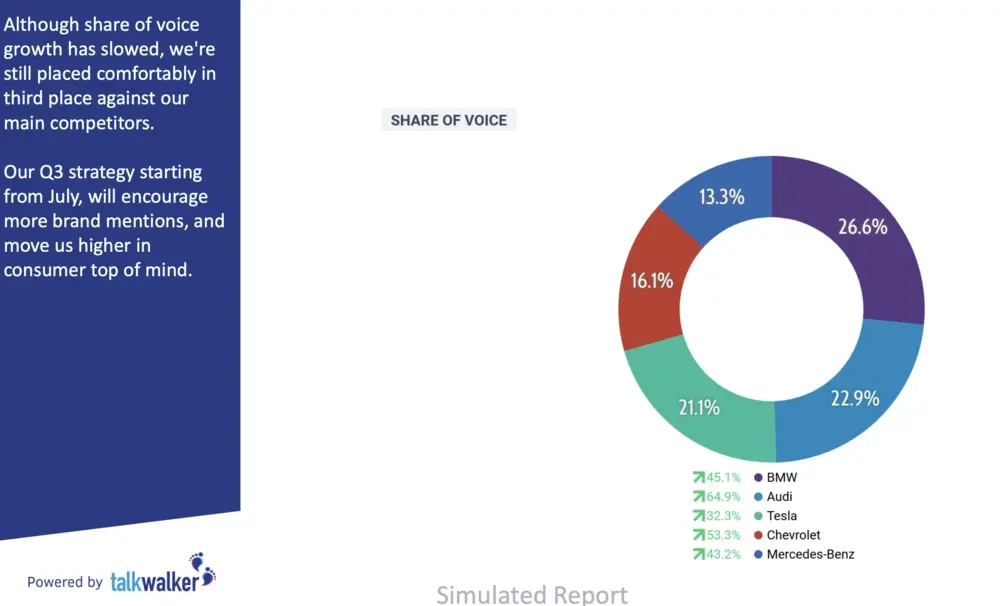
Then, conduct trend analysis to show how your share of voice has changed over time. Look for conversation spikes and dips to identify what events, campaigns, or external factors influenced your visibility.
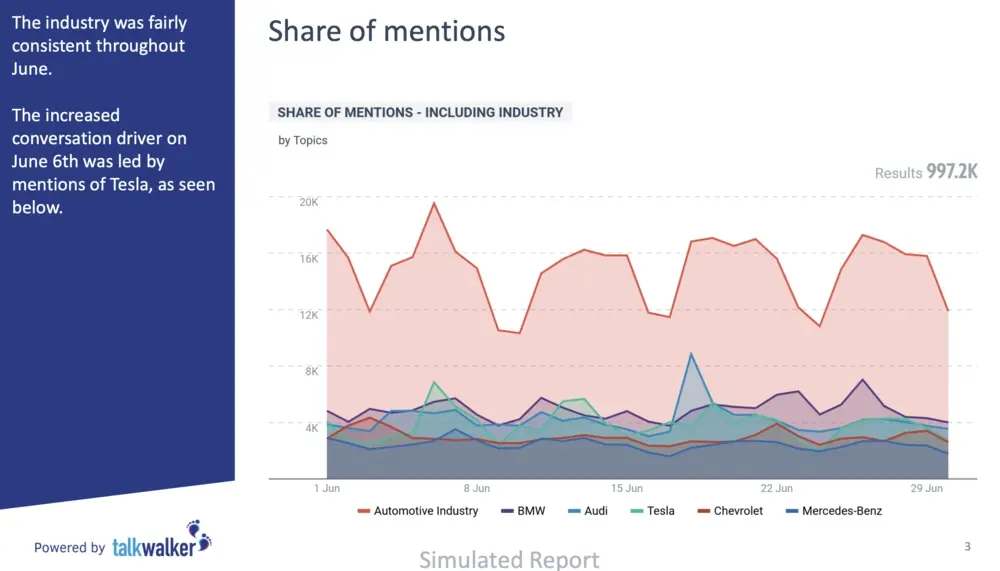
It’s also a good idea to include channel breakdown showcasing which platforms drive conversations and list key brand engagement metrics like raw mentions, engagement levels, and potential reach.
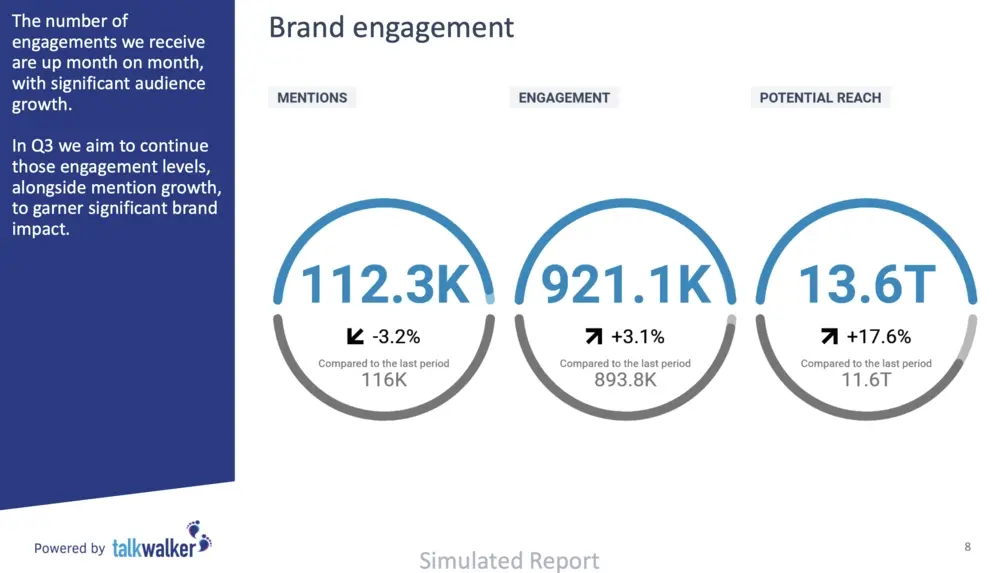
Next, add sentiment analysis comparing positive, neutral, and negative mentions of your brand vs competitors.
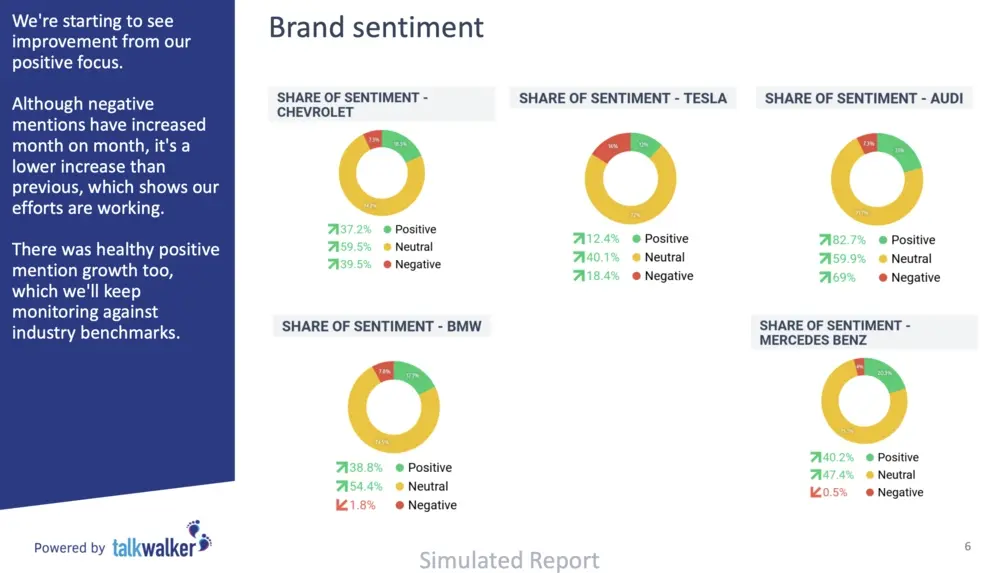
Finally, include audience details like the most engaged segments and a geographic distribution map showing where conversations about your brand are happening globally.
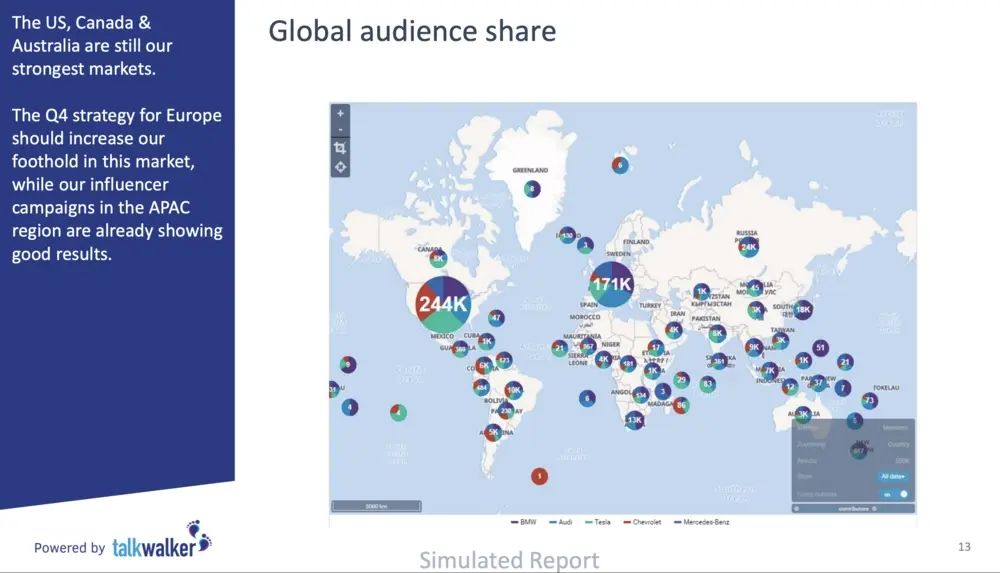
You can also include keyword ranking distributions for SEO and impression share trends by campaign group for PPC.
Then, analyze this data and list the key takeaways, like:
What events, marketing campaigns, or external factors influence your visibility
Which creators and influencers create the most momentum
What social media platforms drive the most conversation about your brand
How your brand visibility efforts pay off, what works well, and what can be improved
How to increase your share of voice in 2025
Growing your share of voice requires strategic action like launching multichannel campaigns and creating content that builds momentum for your brand.
Here are some proven tactics you can try right away.
1. Build thought leadership in niche topics
Find specific topics within your industry where you can become the go-to source of information and leverage content marketing.
Instead of competing in crowded conversations, establish yourself as an expert in underserved areas where your knowledge shines.
Start by identifying questions your target audience is asking that aren't being answered well via social listening, analyzing sales conversations, and actually talking to your customers.
Then, create detailed content addressing these gaps, backed by research and real-world experience of your company’s subject matter experts (SMEs).
Over time, you'll own these conversations and can expand outward.
HubSpot did this by talking about "inbound marketing", essentially introducing this concept and turning it into an established marketing term.

By owning this specific niche first, they gradually expanded their share of voice in wider marketing technology conversations.
Encourage user-generated content
Nothing builds brand visibility like authentic content from real users. People trust their peers far more than they trust branded content.
How can you turn this to your advantage?
By making it easy for your customers to share their experiences.
For example, you can develop hashtag campaigns that align with your audience's values, run contests that encourage creative submissions, and build sharing functionality directly into your product experience.
When you spotlight user content, you create a virtuous cycle of more people wanting to participate.
REI's
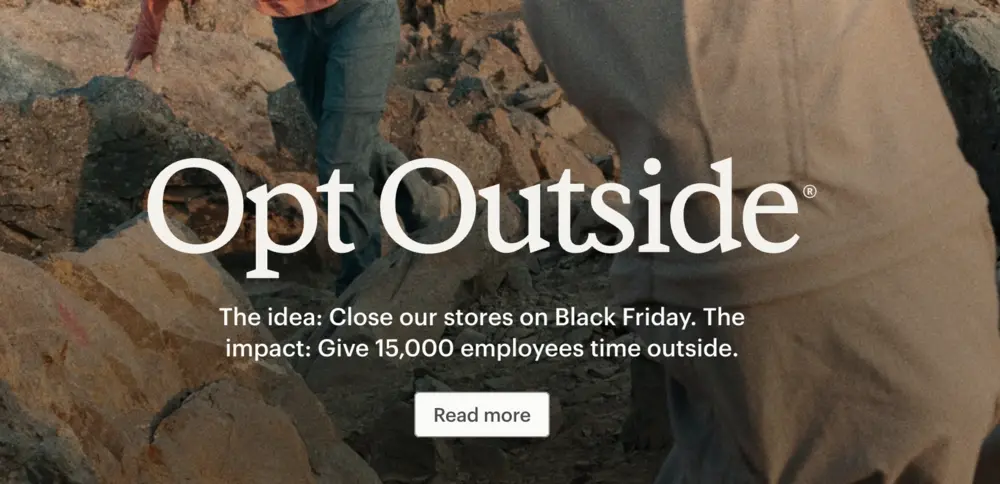
helps you find creators whose audience and content style naturally align with your brand values.
How to approach this effectively?
Look for engagement rates over follower counts and prioritize long-term partnerships over one-off posts.
An influencer with 10,000 highly engaged followers can drive more impact than one with millions of passive fans. Consistent partnerships with the right creators build credibility, foster loyalty, and naturally increase brand mentions.
Glossier exemplifies this approach.
They practically built their brand by partnering with micro-influencers who had genuine connections to their audience.
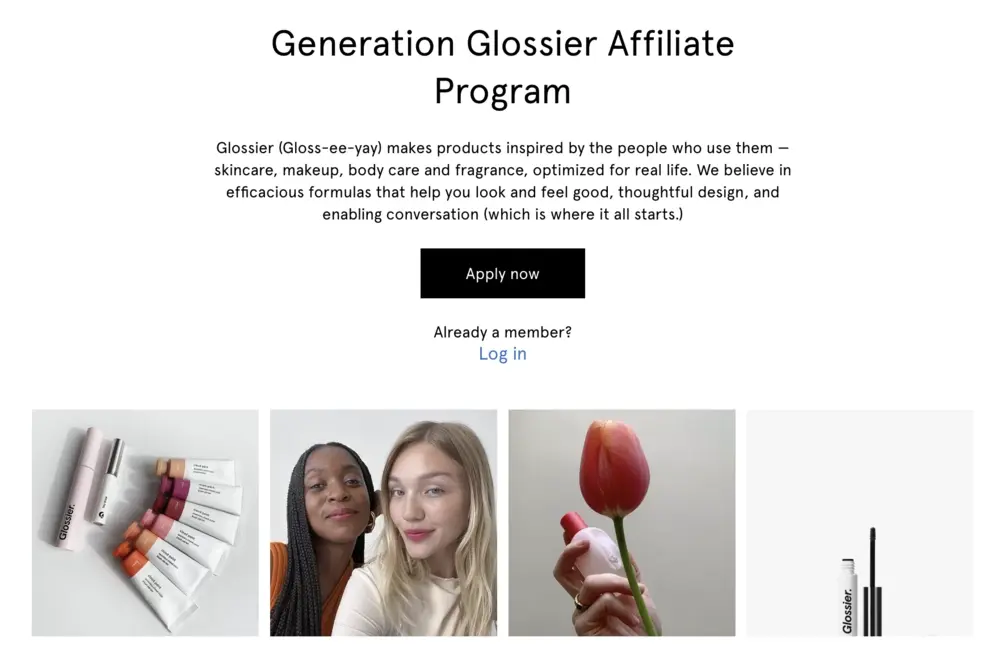
These partnerships felt natural because the influencers were often already fans of the products, making their recommendations more credible and conversation-generating.
Localize your content approach
Global brands often miss opportunities to increase share of voice in specific regions because they use one-size-fits-all content.
Adapting your marketing strategies for different locations can capture conversations that generic global content misses.
Beyond simply translating your messaging, this means understanding regional cultural references, local events, and market-specific pain points.
For example, McDonald's consistently drives regional social media mentions by developing market-specific menu items and campaigns.
Their McSpicy Paneer in India and Teriyaki Burger in Japan create local conversation in a way their global campaigns never could, boosting their regional SOV.
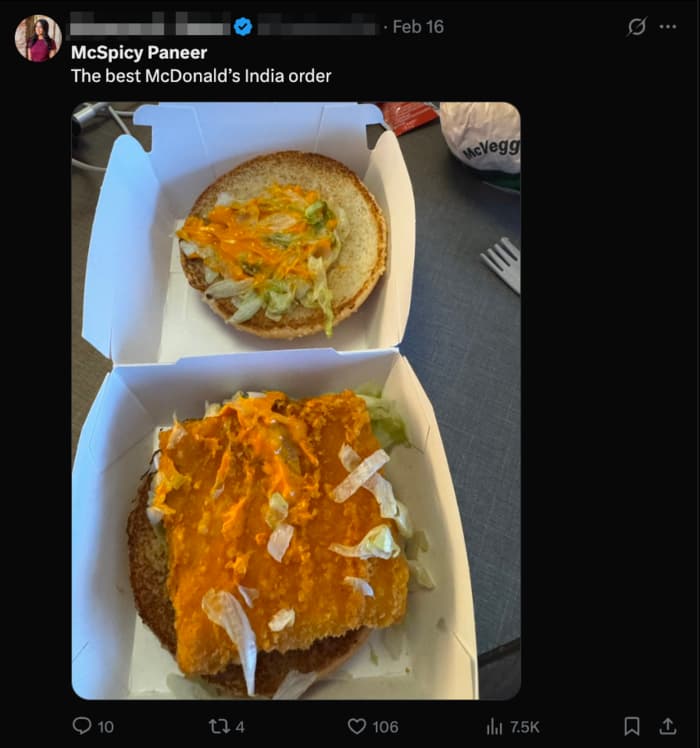
Monitor and respond to trends in real time
Brands that consistently grow their share of voice have systems in place to spot relevant conversations as they happen—not days after the fact.
Using monitoring tools to spot trending topics gives you the opportunity to join discussions while they're still gaining momentum.
First, set up alerts for direct brand mentions, industry keywords, competitor mentions, and adjacent topics that might present opportunities.
Then, create a streamlined approval process for time-sensitive content so you can respond to trends within hours,
The key is balancing speed with relevance—jumping into every trending topic looks desperate, but thoughtfully joining relevant conversations positions your brand as current and engaged.
For instance, Duolingo's community management team often engages with social media users by writing humorous comments, which builds authentic connections and boosts their online visibility.

The top 3 tools to measure your share of voice
To act on any of these strategies, you need reliable share of voice tools with real-time data.
Here are some of the best options you can try in 2025.
Talkwalker: Best for multichannel media monitoring
Talkwalker gives you one of the most comprehensive views of your brand’s share of voice.
It tracks everything from social media (including visuals), podcasts, and forums to TV and print media—all in one platform.
You can then generate customized reports, work with dashboards and AI tools to extract hidden insights, and develop actionable strategies to grow your visibility.

Standout features:
Full media and social monitoring (earned, owned, paid)
Visual listening: detects brand logos in social images and videos
Sentiment analysis in 127+ languages
Real-time alerts, virality scoring, and clustering to spot trends early
AI-powered Blue Silk™ GPT for instant SOV insights and summaries
Hootsuite: Best for social media monitoring
Hootsuite is ideal if your focus is purely on social share of voice.
It combines publishing, monitoring, and analytics across all major social platforms with built-in trend discovery tools.
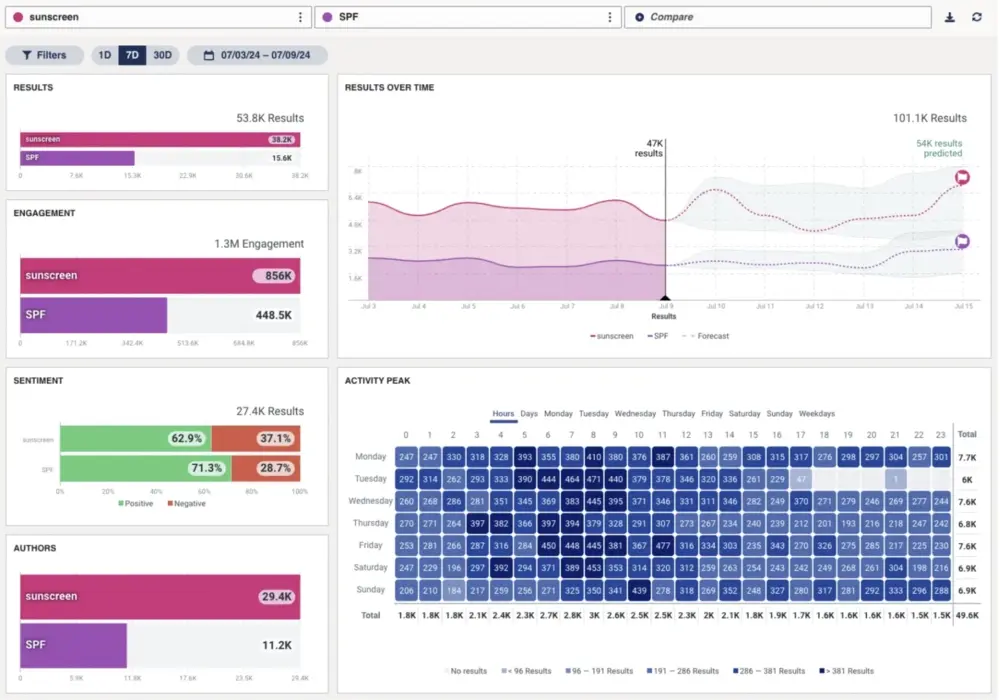
You’ll get to use social media analytics and implement social listening via its integration with Talkwalker.
Standout features:
Tracks social mentions, hashtags, and trends in real time
Audience sentiment and engagement benchmarking
Unified inbox to engage quickly with conversations
Trend-based content creation suggestions powered by AI
Social listening in all Hootsuite plans, even at entry-level
Google Alerts: Best for basic web mentions monitoring
Google Alerts is a simple, no-cost way to track new content about your brand, products, or competitors as it’s published on the open web.
It’s not a dedicated share of voice platform, but it can complement your monitoring strategy—especially for PR teams or startups without a full tech stack.
Standout features:
Sends real-time email alerts when new web content matches your keyword queries
Covers blogs, news articles, forums, and general public websites indexed by Google
Easy to set up with any Gmail account—no paid plan required
Allows Boolean search operators for more advanced queries
Best practices for tracking share of voice
Share of voice is often treated as a static reporting metric. But in practice, it shows whether your brand is visible, relevant, and competitive.
Make sure it becomes a part of your strategic process, not just a monthly slide.
Follow these tips:
Monitor your SOV across multiple ecosystems—SEO, social, media, forums, podcasts
Prioritize insight quality over volume; one credible mention can outweigh dozens of low-impact ones
Segment share of voice by topic, product line, or narrative to assess relevance, not just presence
Track competitor shifts closely—sudden gains in visibility are often early signs of strategic moves
Pair SOV with sentiment and engagement to understand how your brand is perceived, not just how often it’s mentioned
Want a clearer picture of where your brand stands? Book a free Talkwalker demo for a tailored share of voice analysis.
